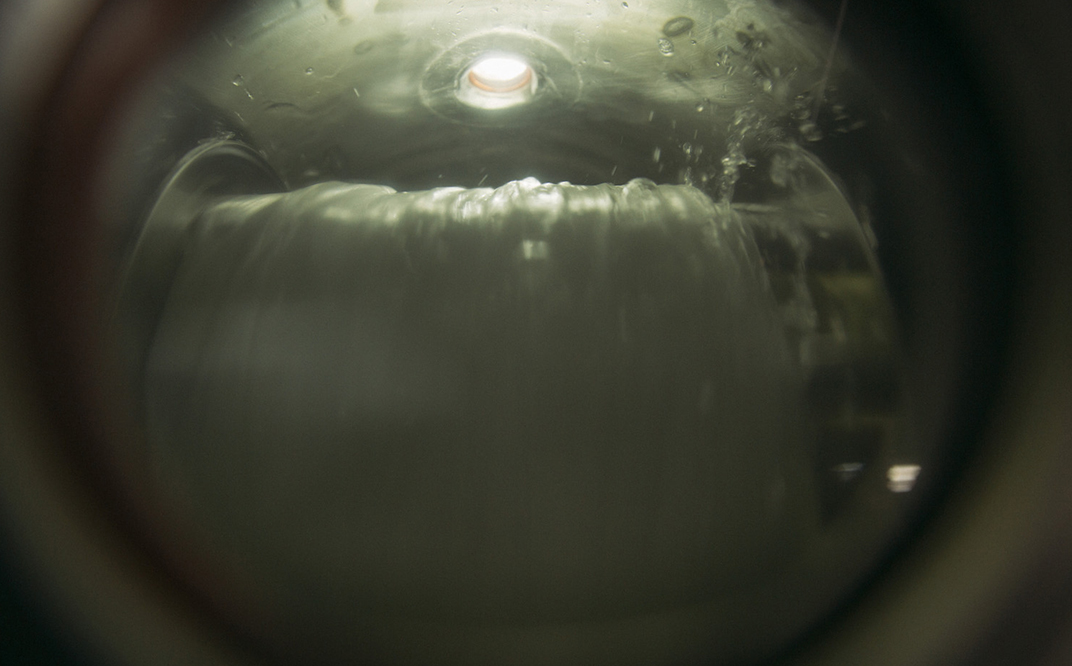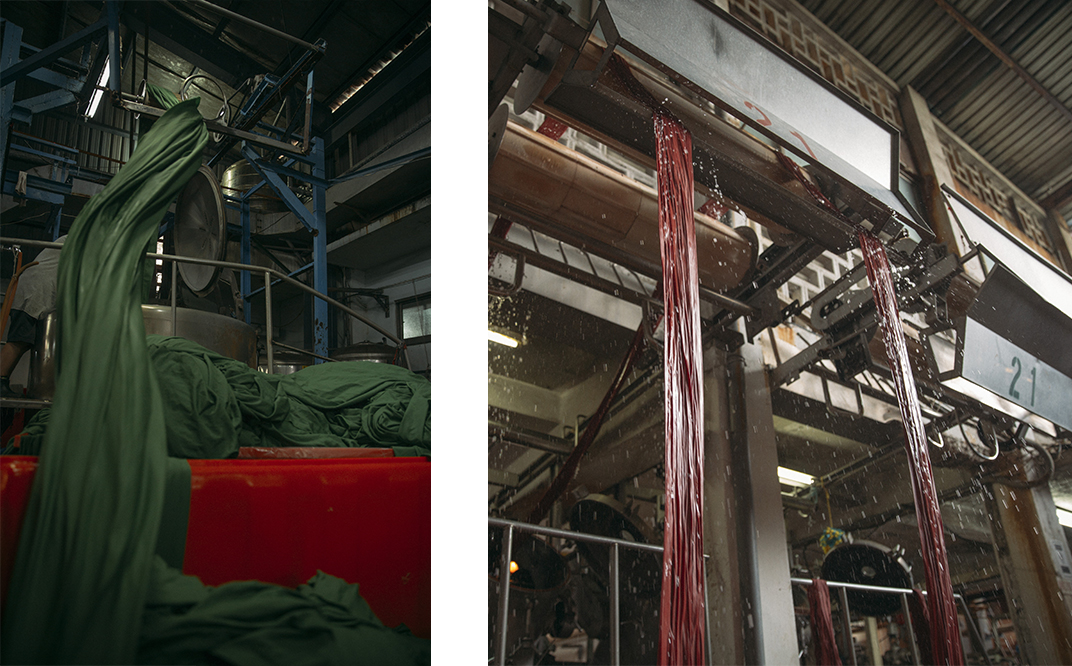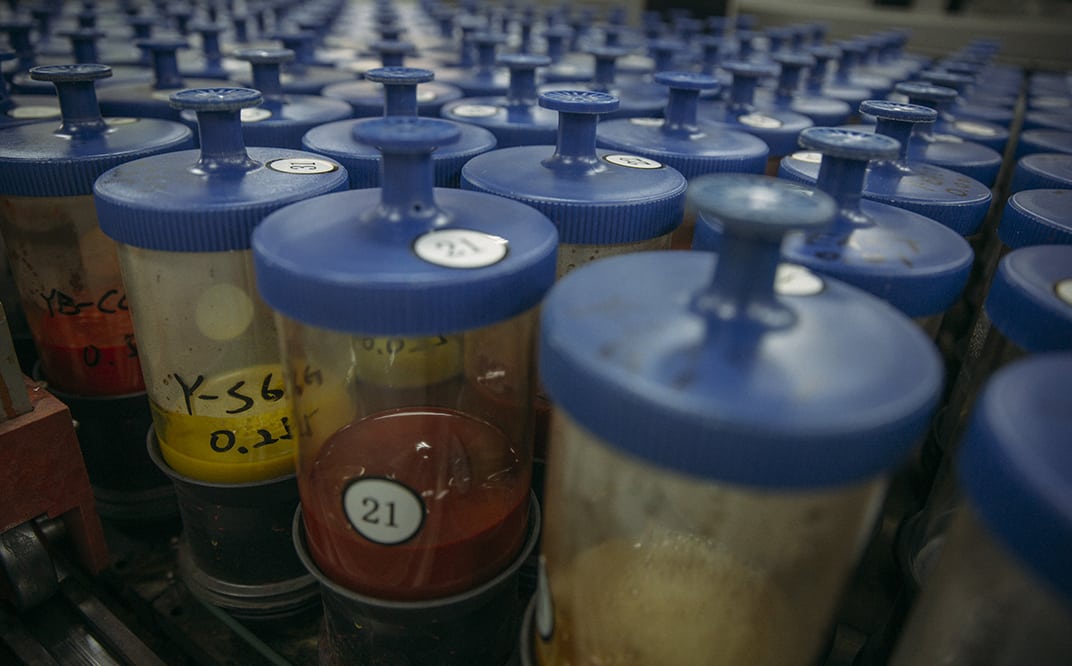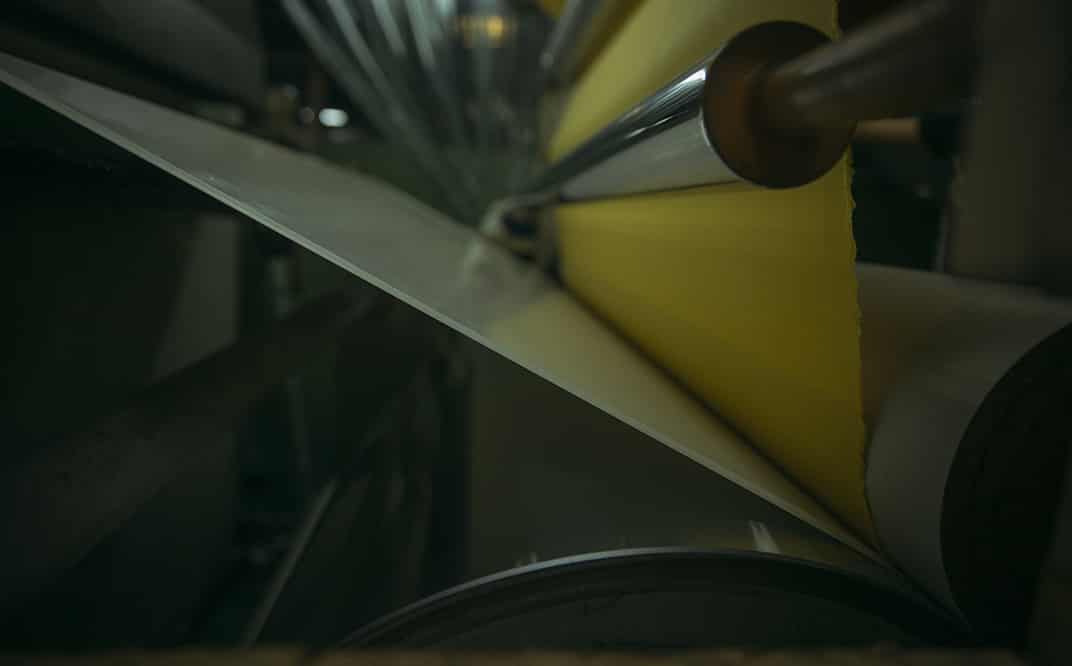In October 2018, we traveled to Taiwan to retrace every step in the snow jacket manufacturing process, from recycling plastic bottles to making the finished product.
Episode #4: Dyeing fabric and laminating a waterproof-breathable membrane.
This is the final two-part step before making the finished product.
1/ Dyeing
The untreated fabric enters what looks like a huge washing machine that is filled beforehand with the color we want to apply. Approximately one hour later, the fabric comes out of the machine fully dyed. We then wash and dry the fabric.

View from inside the machine with the raw fabric in the process of being dyed.

The dyed fabric coming out of the machine.
Creating the coloring requires several chemicals. Unfortunately, the word “chemical” is more often than not associated with the word “harmful.” Creating different colors is chemistry pure and simple.
A chemical can be (and thankfully often is) totally harmless.
100% of our technical fabrics are certified Bluesign Approved, which means that no harmful chemicals were used during the process: from thread spinning and weaving to dyeing and laminating. This is the world’s most stringent certification with regard to chemical use.

Flasks with different colored dyes
After dyeing, we apply a durable water repellent finish (DWR) to the fabric. We use PFC-free Teflon EcoElite, which contains no harmful or noxious chemicals.
As of today, we still use a conventional dyeing process, but we should and need to do better. We are currently working an alternative method that will allow us to dye the polyester as it is spun into thread. This will significantly reduce the amount of water and energy used in the process.
2/ Lamination
The fabric is now dyed, water repellent, but it is not yet waterproof or breathable, two required features when making a high-performance technical snow jacket. Lamination involves gluing a waterproof-breathable membrane to the face fabric.
Glue can be applied to the entire surface of the fabric. We do this on stretchy fabrics (since there is a risk of ungluing / delaminating when the fabric stretches). Otherwise, partial gluing with drops of glue works just fine.

The membrane in white and the fabric in yellow just before lamination.
The membrane lets air pass through but not water. When combined with the durable water repellent finish, the membrane acts as a second barrier to keep water out.
The level of breathability and waterproofness depends on the membrane’s level of performance.
Our fabric is now dyed and outfitted with all of the technical functionalities it needs! All that remains is to cut and put together the different pieces.
Learn more in our next episode: making the actual jacket.
